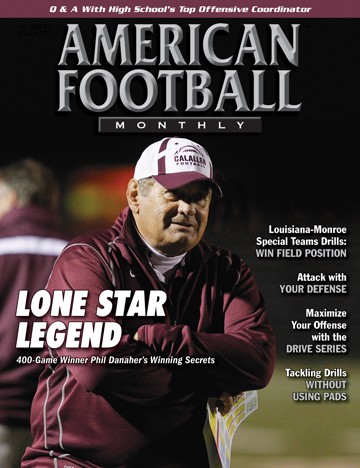Article CategoriesAFM Magazine
|
Tackling Drills Without Padsby: Deion MelvinDefensive Coordinator Lindenwood University © More from this issue What can help develop a player to be a better tackler? One thing a player can do to be a better tackler is to know their surroundings. In knowing their surroundings, I’m talking about the scheme, and not only their fits, but the fits of players on either side of them. One of the biggest things we forget as coaches is to teach our players where their help is. Knowing where their help is allows them to play faster and attack in proper angles. Not knowing where your help is creates a slower, timid, or cautious player, because they are trying not to make a mistake or miss a tackle. A lot of players make mistakes because they don’t know where their help is coming from on the field. Players think they have to make every play or tackle because they have no idea where other defenders are. This puts stress on the tackler an....The full article can only be seen by subscribers.
|
|
|||||||
| HOME |
MAGAZINE |
SUBSCRIBE | ONLINE COLUMNISTS | COACHING VIDEOS |
Copyright 2026, AmericanFootballMonthly.com
All Rights Reserved





